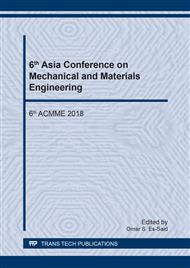p.73
p.79
p.89
p.95
p.100
p.105
p.111
p.117
p.124
Effect of Deep Cryogenic Process on the Microstructure and Hardness and Wear Resistance of High Carbon Tool Steel
Abstract:
In this investigation, the effects of different heat treatment conditions on the mechanical properties of high carbon tool steel (SK2) were explored. Experimental results indicated that immediately doing deep cryogenic treatment can effectively reduce retained austenite after quenching. The moment of the holding time for the cryogenic treatment was extended can promote the fine carbides precipitated, and thus increased its hardness. The results of X-ray diffraction showed that the carbides in the matrix included Fe3C and Fe7C3.The wear test results demonstrated that the specimen with Q-T1hr-C24hr-T1hr treatment has the highest wear resistance than the others, which was caused by the effect of several tempering processes to improve toughness of the matrix and to precipitate considerable quantities of the fine carbides.
Info:
Periodical:
Pages:
100-104
Citation:
Online since:
October 2018
Authors:
Price:
Сopyright:
© 2018 Trans Tech Publications Ltd. All Rights Reserved
Share:
Citation:


